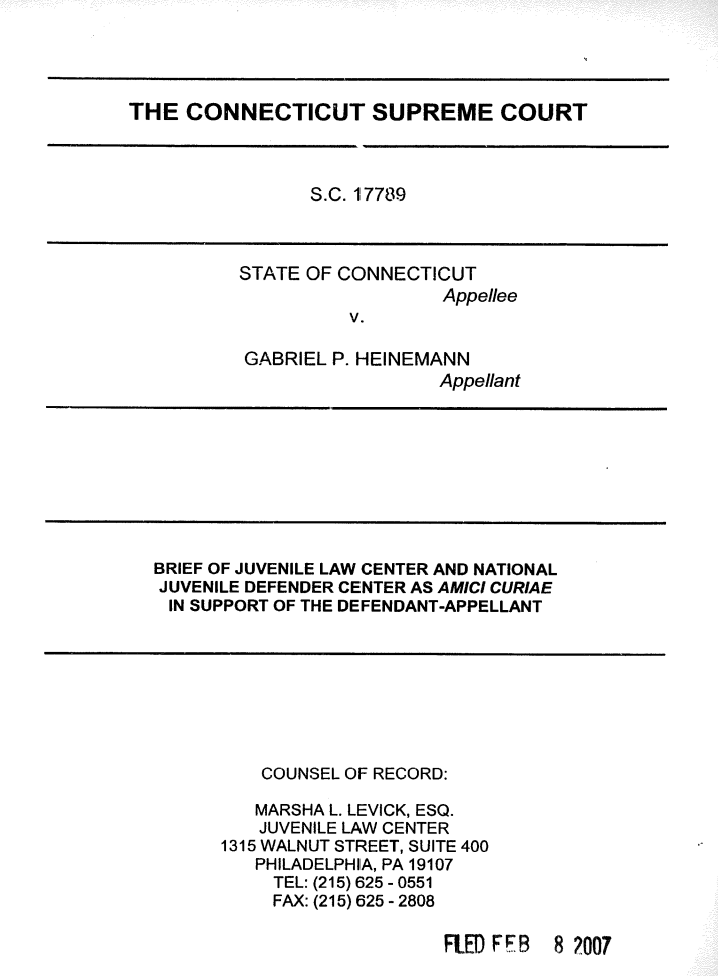
Summary of Argument
This case calls upon the Court to clarify the role of age in the duress defense. The jury repeatedly asked the trial court for direction as to whether it should consider Gabriel Heinemann’s age in determining whether he acted under duress. The lower court misread state law when it instructed the jury that age mattered to the duress defense only in relative terms - that is, only to the extent that the coercers were older than the coerced. Connecticut law does establish the relevance of age to the duress defense; nowhere does the law suggest that age should be considered only in relative terms.
Both constitutional law and adolescent development research make clear that age matters categorically to the determination of culpability. Adolescents differ from adults cognitively, emotionally, and neurologically. Indeed, the area of the brain tied to risk assessment and self-regulation continues to develop throughout adolescence.
At the time of the incidents in question, defendant Gabriel Heinemann was just 16 years old. Connecticut law, federal Constitutional law and adolescent development research all dictate that the jury should have been instructed to consider his young age - regardless of the age of his coercers - in determining whether he was under duress.